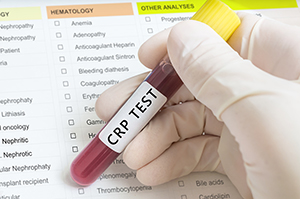



| By Dr. Ronald Hoffman

Antibiotics turning us into couch potatoes: Antibiotic prescriptions have soared in recent years, despite concerns over antibiotic resistance, which emerges when ordinary bugs mutate to become impervious to drugs. While North America and Europe lead the world in antibiotic consumption, the developing world is catching up fast; neighborhood drugstores in Lima, Delhi and Nairobi routinely dispense powerful drugs over-the-counter to people with minor maladies who have disposable cash. Global antibiotic consumption rates increased by 46 percent since 2000.
Closer to home, providers in doctors’ offices, emergency departments, and other outpatient settings in the U.S. wrote nearly 270 million antibiotic prescriptions in 2015, amounting to 838 antibiotic prescriptions for every 1,000 people. It’s conservatively estimated that 30% were inappropriate.
Now comes news that antibiotics wreak havoc on athletic performance. A mouse study revealed that antibiotics cause sustained decrements in exercise performance.
We’re not all athletes. The bigger implication is for those of us non-champions who experience lethargy and lack of motivation—even outright depression—due to what excessive dependence on antibiotics—and poor diets—has done to our gut-brain axis.
A vicious cycle of demoralization and inertia ensues, discouraging exercise and prompting weight gain, which is a further impediment to activity.
This may have critical implications for our kids, who are increasingly sedentary and prone to obesity and diabetes. Inappropriate antibiotics for nonhospitalized kids cost the U.S. at least $74 million; such prescriptions can cause complications including diarrhea and rashes.
But antibiotics also make kids fat. Initiatives like those of the World Health Organization to curb antibiotic overuse have met with limited success. Don’t be that parent who pressures your kids’ pediatrician to hand over an antibiotic prescription for a minor malady that’s likely to resolve on its own.
More fruits and vegetables means less ADHD: The idea that diet plays a role in childhood behavioral problems is not new. As far back as medical school in the 70s and 80s I was exposed to the Feingold Diet. Since then, the medical paradigm has favored powerful pharmaceuticals with unknown long term consequences for developing children’s brains. Nearly 43% of children of the estimated 8 million kids with ADHD in America are treated with medication alone.
Now comes vindication for the diet-behavior connection: “Eating a healthy diet, including fruits and vegetables, may be one way to reduce some of the symptoms of ADHD,” said one of the lead researchers of a recent study.
In a related study, a micronutrient (vitamin/mineral) supplement showed marginal gains in attention in 6-12 year-olds with ADHD.
Previous reviews have shown positive impacts of Omega-3 consumption on ADHD symptoms.
Getting kids to eat right, as many parents will attest, is a struggle. The key appears to be to familiarize youngsters with a wide variety of foods as early as possible. Even in utero exposure and breast-feeding by mothers themselves on a healthy, varied diet may imprint good eating habits on babies.
A recent study entitled “Supporting strategies for enhancing vegetable liking in the early years of life” concludes that the best strategy for getting kids to accept healthy foods is to prompt them early and often: present foods in a non-coercive fashion; if at first you don’t succeed, try again; award stickers for compliance; model healthy eating behaviors as parents; and engage kids in preparing, reading and talking about foods.
I’ve seen it work for the toddlers in my family—they’re champion eaters, braving exotic tastes that I didn’t cultivate until well after I became an adult!
It’s crucial to get to them early, because once preferences shift to ultra-processed foods, they’re imprinted in the brain and there may be no turning back, setting the stage for a lifetime of physical and mental impairments.
Limit screen time: Another way you can help kids reach their potential is by limiting screen time. Sure, it’s a constant battle—mobile devices and TV screens are like catnip for children.
A new study explores “Effects of Limiting Recreational Screen Media Use on Physical Activity and Sleep in Families With Children”.
Restricting screen media exposure to less than three hours per week resulted in an average increase of physical activity of 45 minutes per day; there was no statistically significant impact on sleep duration—perhaps because the study was done on younger kids who are less likely than adolescents to binge on social media until the wee hours.
The authors conclude: “Balancing children’s recreational screen media use should be a public health priority as it increases their physical activity substantially.”
Current estimates are that on average, children ages 8-12 in the United States spend 4-6 hours per day watching or using screens, and teens spend up to 9 hours.
Though we think of declining estrogen as the hallmark of menopause, it's actually common for…

Up to 12 percent of Americans have ulcers at some point in life. Peptic ulcers…
Gallbladder disease is a modern illness. An estimated 20 million Americans have gallbladder disease. The…

There’s more to GI health than whether or not to take an acid-blocker. All too…

In the latest attempt to remove “stigma” from medical terminology, liver specialists have come up…

Q: My husband’s high sensitivity C-reactive protein (hs-CRP) is 1.62 and his homocysteine is 13.1. If…

Banish the Bloat: Leyla Weighs In with Tips and Insights

Our virtual voicemail is open 24/7, so there's no need to wait to submit your questions for Dr. Hoffman. Leave a message, and you may hear your question featured on the Intelligent Medicine radio program!